|
L300 Line Level Pre-amplifier
 
L300 has 5 inputs and twin outputs (2 pairs single ended and 2 pairs balanced via XLR). The
circuit uses output transformers and a sophisticated full valve rectified, choke smoothed, regulated power supply including
a 300B triode as the series element. A Line Stage pre-amplifier needs to offer the facility to select between different sources, to provide
some means of attenuating the chosen source and then deliver it in an uncorrupted form to the power amplifier. Controlling the Volume In
recent times, with the prevalence of digital source components, many audio enthusiasts have adopted the use of passive volume
controls incorporating resistive potential dividers and even transformer based attenuators. These are volume controls where
attenuation is achieved through the use of tapped transformer windings. On the face of it either of these
might appear to offer the purest approach. However, it’s not so simple. Resistive
attenuators are generally of quite a high impedance so as not to load the source driving them but in turn confer little drive
capability themselves. In some circumstances they can sound quite transparent but it’s a commonly
experienced subjective impression, that such attenuators leave the music with a lack of purpose and grip. Long
connecting cables may also blunt the high frequency response, a situation which may be worsened by using a following amplifier
with low input impedance.
Transformer volume controls seem to address the issue of drive capability to some extent, but they have their
own problems. A wide bandwidth transformer can be made such that, when using both windings in full, i.e.
with no attenuation, it transfers a pretty good facsimile of the source signal. However, as attenuation
is applied and the transformer has to transform more and more, difficulties start to arise. By the time
significant attenuation is applied, the performance of the transformer no longer looks quite as impressive with differing
patterns of resonance being visible at each step. The reproduction of timbre suffers and the sound quality
realized alters slightly with each change in level. Auto-formers which attenuate by tapping off a single
sided winding have actually proved to be the most transparent passive controls we have tested and yet even they seem to lack
a certain something.
The
other issue with volume controls based on a multi position switch is a sense that the right level for listening to a piece
of music can never quite be reached. If the steps of the attenuator are made close enough to suit a source with a given output
or a following amplifier with a particular sensitivity, it will be wrong with another source or another amplifier. A conventional
potentiometer gives a much finer range of adjustment.
In
the L300, source selection is via a high quality switch located near to the input sockets. The chosen source is routed to
a high quality film potentiometer and from there on to the audio circuit. This consists of 2 directly coupled
triode stages, the second loaded by an output transformer which steps down the amplified signal allowing it to be coupled
to the power amplifier at a manageable level and via a low impedance output. The output stage of the L300
is impervious to long interconnecting cables or lower impedance power amplifier input stages. The use of output transformers
also allows the option of a true balanced output configuration if desired. A low gain, low output impedance stage is in itself nothing new. Many transistor pre-amplifiers are
similarly specified. However, they usually achieve it by means of excessive negative feedback which is
highly detrimental to the subjective reproduction of music.
Power Supplied properly
The L300 also incorporates an extremely sophisticated regulated power supply to maintain constant operating
conditions for the audio circuitry. It includes a valve rectifier, a choke filtered stage and then a series regulator featuring
the 300B power triode as the passing tube. A very elaborate error amplifier referenced to a gas voltage reference valve allows
the circuit to precisely maintain the high tension supply regardless of fluctuations in the mains supply and the varying current
drawn by the audio circuit. Filament supplies are also fully regulated to further reduce the potential for noise. The L300 preserves the verve and energy in recordings
that almost all pre-amplifiers and passive volume controls otherwise lose. It does this
without sacrificing transparency or introducing euphonic colouration to the sound.
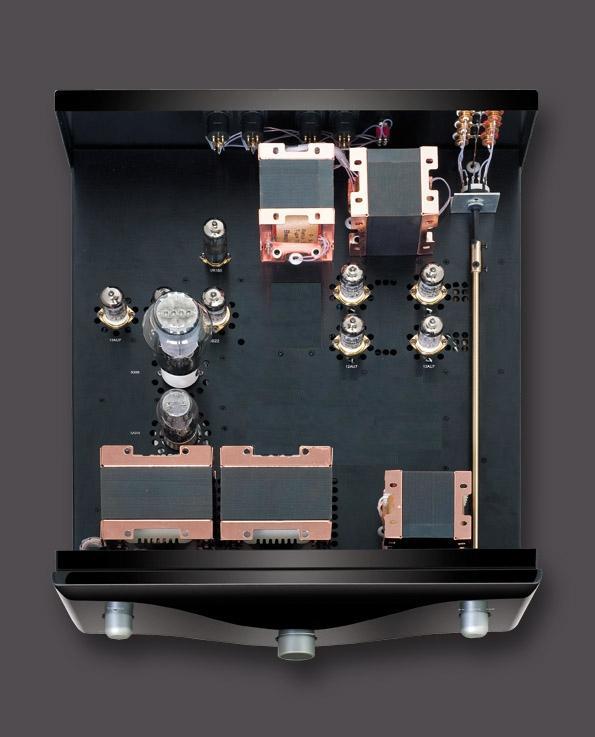
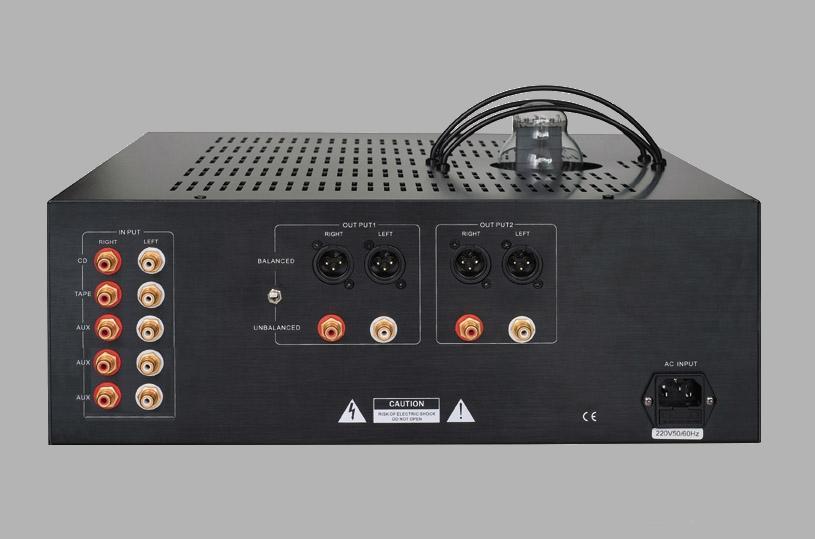
L10 Line Level Pre-amplifier
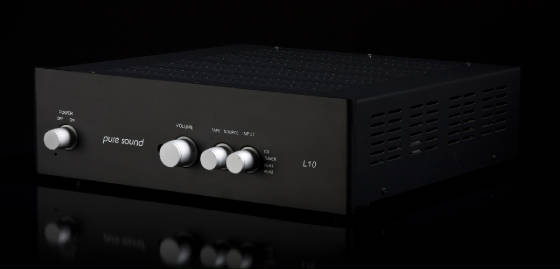
Following the positive response to our flagship L300 pre-amplifier, puresound
has developed the L10, a new, more affordable design which incorporates much of the thinking that makes the L300 so highly
regarded. The L10 has 4 inputs, a separate passive Record In Record Out loop and two pairs of single ended outputs. The circuit
uses output transformers and a sophisticated full valve rectified, twin choke smoothed power supply. It also offers remote
control of the volume via a separate handset. In
the L10, source selection is via a high quality switch located near to the input sockets. The chosen source is routed to a
high quality motorized, film potentiometer and from there on to the audio circuit. This consists of a single
ended triode stage loaded by a custom wound wideband output transformer which steps down the amplified signal allowing it
to be coupled to the power amplifier at a manageable level and as a low impedance source. The output stage of the L10 is impervious
to long interconnecting cables or lower impedance power amplifier input stages.
The L10 also incorporates an extremely sophisticated power supply
to maintain constant operating conditions for the audio circuitry. It includes a valve rectifier, and a twin choke filtered
LCLC stage which provides a stiff, voltage rail allowing the audio circuit to operate in a calm and orderly way regardless
of the demands the music makes on the amplifying stage. Filament supplies are fully regulated to further reduce the potential
for noise.
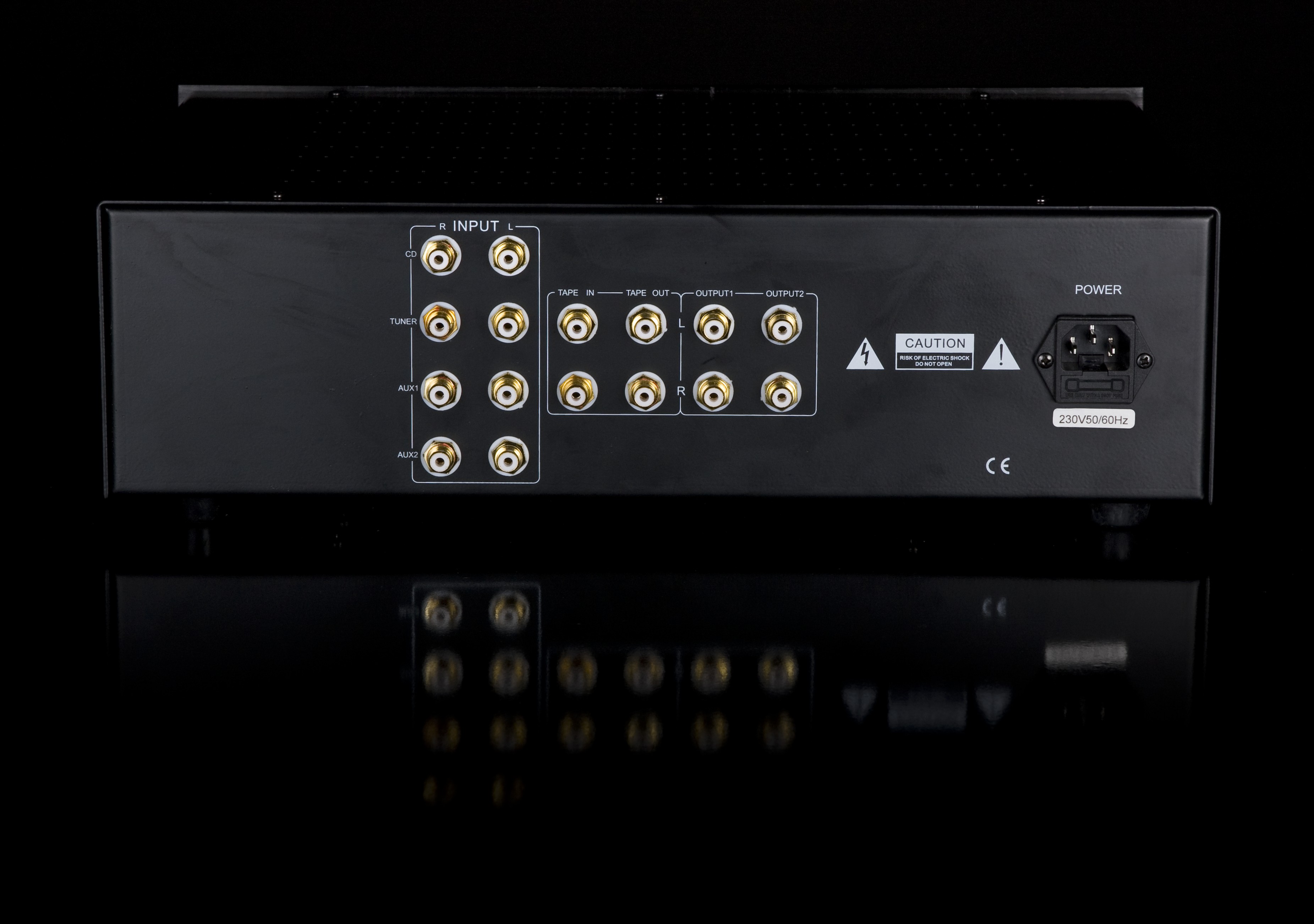
P10 Phono Amplifier

|
| HiFi World February 2008 |
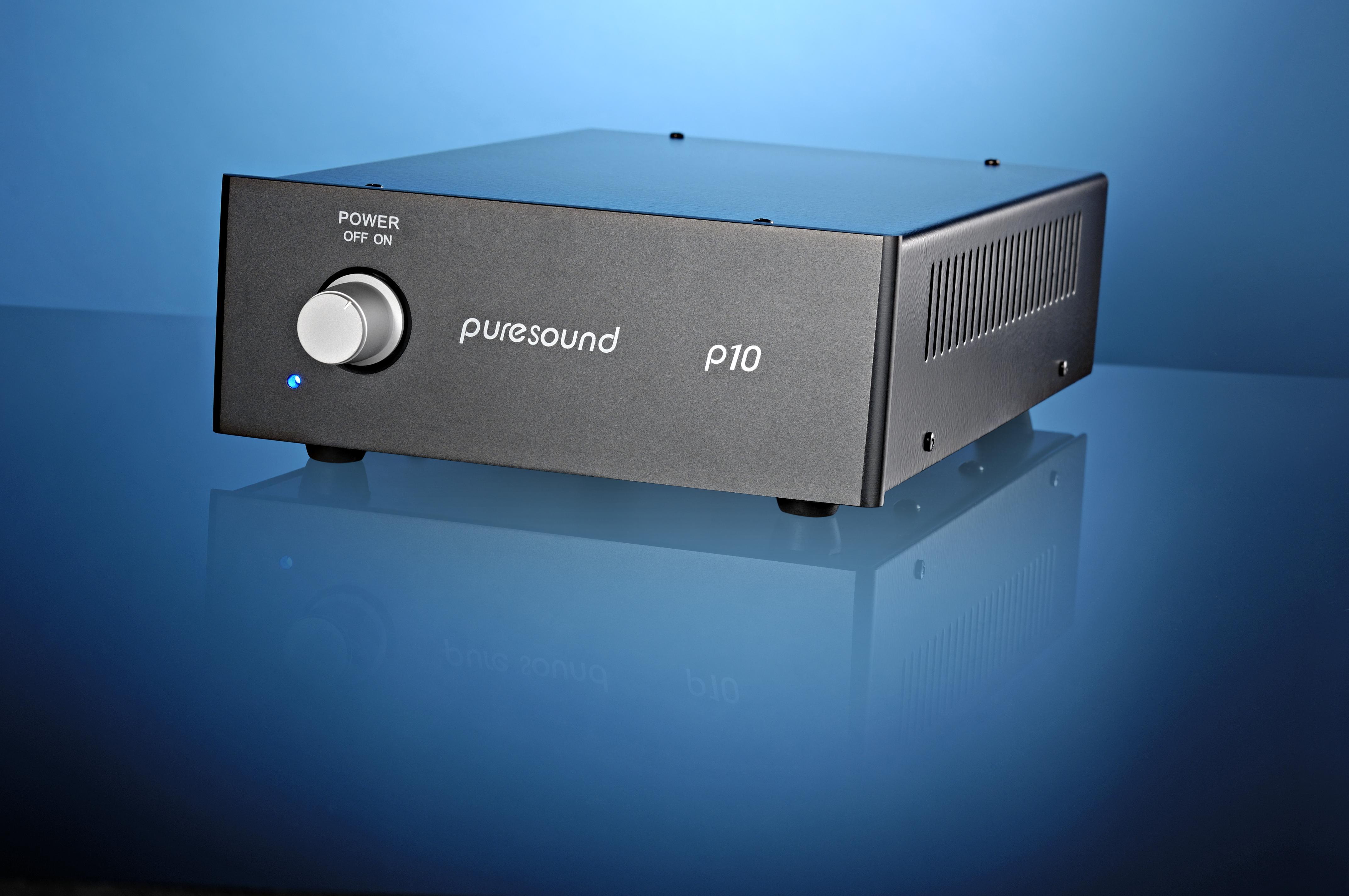
The P10 phono amplifier is intended to meet the requirements of audio enthusiasts who still enjoy the distinctive
strengths and high quality of reproduction that can be derived from vinyl records. It is compatible with
moving magnet and high output moving coil cartridges. Low output moving coil cartridges will require the
use of an additional step-up device or matching transformer. Full output from the P10 is sufficient to
drive the line level inputs of any integrated amplifier or pre-amplifier.
The active amplification stages use double triodes in a simple anode follower configuration.
The phono equalisation is achieved using passive components and can therefore maintain its accuracy over time without introducing
the unacceptable levels of phase shift found in active equalisation stages. There is no negative feedback in the circuit.
The P10 features a particularly elaborate HT power supply. After the initial rectification
and smoothing, the supply is split and two separate, heavily decoupled high voltage rails are established. These feed each
half of the output valve while further decoupling of each rail allows the cleanest and most independent voltage rails possible
to feed each half of the input valve. The absolute stability of this supply regardless of the demands made
by the audio signal on the circuit, lends the P10 a stability and poise which allows effortless reproduction of the most demanding
source material.
The valve filaments are also fed by a DC supply
thereby ensuring constant operating conditions for the amplifier.
The circuit makes use of close tolerance metal film resistors, polypropylene signal coupling capacitors
and selected valves.
The gain of the P10 is 40 dB (x 100).
The P10 phono amplifier meets the very strict performance criteria required of all puresound
products and will give excellent results with vinyl records provided that it is used with appropriate ancillary equipment.
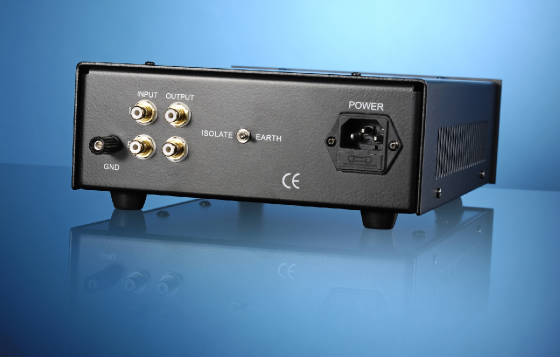
T10 Impedance Matching Transformer

The T10 mc transformer is now available. It
has been our experience that the best results are achieved when using moving coil cartridges loaded via a correctly matched
transformer. The T10 contains two wide bandwidth, custom manufactured transformers with MuMetal cores. The transformers
have a step up ratio of 1:36 switchable to 1:18 and therefore allow for the adjustment of cartridge loading between
36 and 144 ohms.
M845 Mono Power Amplifier

The M845
mono power amplifier is a single ended design based around the 845 power triode. Operating in Class A and
giving 27 Watts of output power, it will complement a wide range of medium to high efficiency loudspeakers.
The 845 triode was originally
developed by RCA in 1931 as a radio transmitting and audio amplification valve. The anode is machined from solid graphite
to allow high power dissipation. It has an extremely linear transfer characteristic. In recent years, a
renewed interest in this kind of valve has resulted in them being manufactured again by various factories in China.
Implementing the 845
in a sympathetic circuit which takes full advantage of its capabilities is not straightforward. The filament draws a significant
amount of power and also forms a part of the signal path so energising it correctly is a critical part of the design. The
valve also operates with very high voltages across it so again, a careful choice of filtering components for that high voltage
supply is essential such that adequate current is available to the valve at all audio frequencies instantaneously.
In the M845 this supply includes a hybrid Graetz bridge for the initial rectification and a substantial smoothing choke
as part of its CLC type filter.
Although all of the elements; power supply, circuit topology & component
choice have a profound effect on the overall performance of a valve amplifier, one of the most important aspects is the design
& construction of the output transformer. A high primary impedance, the resultant large step down ratio and the need to
maintain a high level of insulation between the windings all conspire against the transformer designer and the quest for extended
bandwidth with efficient power transmission. The M845 utilises an in house designed output transformer that underwent extensive
trials using a variety of core materials and winding techniques before the final configuration was chosen.
The other difficulty in using the
845 is in the design of a stage capable of cleanly delivering the voltage swing necessary at its grid to take it to full output.
The M845 incorporates a driver stage based on the 6SN7 triode coupled via a custom wound, wideband, interstage transformer.
The amplifier’s input stage is directly coupled to this driver meaning that there are no coupling capacitors used in
the circuit at all.
The circuit also operates without any negative feedback.
The end result is an amplifier capable of reproducing
the full measure of instrument tone with extraordinary dynamic contrast, energy and colour. When partnered
with appropriate loudspeakers the M845 will deliver an unparalleled reproduction of all types of music.
|

